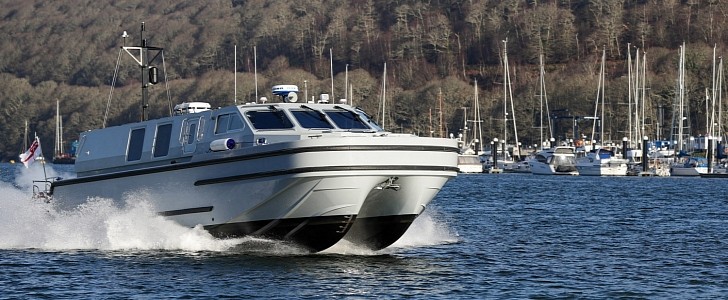When it comes to the UK Royal Navy, its aircraft carriers and frigates take center stage, especially the latest one to have joined the fleet in 2021. But, in addition to the fact that the Royal Navy also flaunts other types of impressive vessels, such as the HMS Protector icebreaker, or its new autonomous boats, there are also watercraft behind the scenes that play an important part.
It’s been an exciting beginning of the year for the UK’s future naval leaders. You might think that kicking off training on brand-new boats is not all that exciting, but it is when you learn that it’s the first time in more than half a century. Yes, the youngest training boat that’s been in current use until now was delivered way back in the ‘70s.
The old training boats operating at the Britannia Royal Naval College in Dartmouth, known as “picket boats,” have certainly proven their durability and performance, having been active from the 1960s until 2021. Last year, Project Vahana was introduced, with the goal of replacing the old flotilla with modern, more efficient, and easier to operate training boats.
This year, cadets have started training on the new Vahana boats. The 49-foot-long (15 meters) vessels are powered by twin jets, replicating the Navy’s Pacific 24 standard sea boat instead of the propellers that powered the old boats. On the River Dart, they are only allowed to reach 6 knots (6.9 mph/11 kph), but they’re designed to hit 40 knots (46 mph/74 kph) when necessary.
They’re also built for basic accommodation, including bunks, shower, a boiler, and a microwave) because cadets get to live and work on board for up to a week, following the training period. They also have access to electrical power and connectivity so that they can share essential data for planning and command operations.
The new boats also feature a modular design, for easier and more effective maintenance, and more advanced equipment that enables optimal training, similar to what cadets would find on the Navy’s sea boats.
The next-generation Vahana boats are ready for top-level exercises in the years ahead.
The old training boats operating at the Britannia Royal Naval College in Dartmouth, known as “picket boats,” have certainly proven their durability and performance, having been active from the 1960s until 2021. Last year, Project Vahana was introduced, with the goal of replacing the old flotilla with modern, more efficient, and easier to operate training boats.
This year, cadets have started training on the new Vahana boats. The 49-foot-long (15 meters) vessels are powered by twin jets, replicating the Navy’s Pacific 24 standard sea boat instead of the propellers that powered the old boats. On the River Dart, they are only allowed to reach 6 knots (6.9 mph/11 kph), but they’re designed to hit 40 knots (46 mph/74 kph) when necessary.
They’re also built for basic accommodation, including bunks, shower, a boiler, and a microwave) because cadets get to live and work on board for up to a week, following the training period. They also have access to electrical power and connectivity so that they can share essential data for planning and command operations.
The new boats also feature a modular design, for easier and more effective maintenance, and more advanced equipment that enables optimal training, similar to what cadets would find on the Navy’s sea boats.
The next-generation Vahana boats are ready for top-level exercises in the years ahead.






